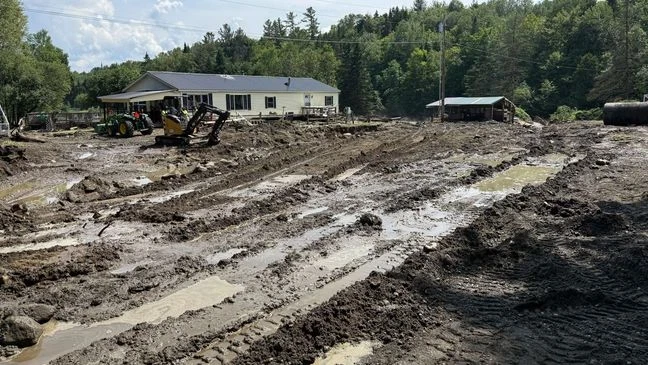Vermont’s Summer Floods Strike Again Washing Out Roads and Homes
Heavy rains unleashed flash flooding across Vermont, damaging infrastructure and homes for the third straight summer. The latest deluge, centered in Sutton and surrounding towns, erased roads and isolated nearly 20 households.
Floodwaters hit Vermont’s rural communities on Thursday, July 10, 2025, when intense storms dumped 3 to 5 inches of rain—up to 5.07 inches in West Burke and nearly 4.92 inches in Sutton—within hours. The flash flooding overwhelmed culverts, streams, and roads, cutting off access to multiple homes and forcing swift‑water rescues in several towns. In Sutton alone, roughly 20 properties were isolated and two homes required immediate evacuation by rescue teams responding to rapidly rising water. This marks the third year in a row that severe summer floods have battered Vermont, striking on the same July 10 date in 2023, 2024, and now 2025.
Flood’s Impact on Roads and Homes
In Sutton, Calendar Brook overflowed and surged over Road banks, washing away driveways, destabilizing foundations, and submerging first floors. One couple and their dog had to flee to their roof and escape via window. Nearby Lyndonville and East Haven saw major washouts: sections of Route 5 and VT‑114 collapsed, while bridges and culverts failed across Addison County. Repairs are expected to exceed $1 million in Sutton alone, on top of ongoing recovery costs from past years. A significant portion of the high school roof in Middlebury was also torn off by storm winds.
Emergency officials described the downpour as “incredibly strong” and “localized,” with the bulk of the rain falling in just one hour. Despite the storm’s limited geographic reach, damage was concentrated in steep valleys that funnel water powerfully, typical of Vermont’s mountainous terrain elevated by atmospheric moisture.
Why Vermont Keeps Flooding: Climate and Terrain
Experts point to long‑term climate trends: Vermont has seen an increase of about 6 inches of annual rainfall since the 1960s. Higher moisture in the air, driven by warming, amplifies intense downpours. The state’s steep geography then turns heavy rains into fast‑moving runoff, overwhelming infrastructure built for less extreme events. Officials confirm that rising moisture levels and worsening storms are compounding flood risks for mountain‑valley communities.
Meanwhile, state leaders are eyeing adaptation strategies. After floods in prior years, Vermont passed the Flood Safety Act, restricting new riverside development starting in 2028 and enabling buyout programs. But with over 300 buyout applications pending and persistent housing shortages, relocation remains a complex struggle.
Community Resilience Under Strain
Residents voiced exhaustion and concern. Michelle and Tanika Tanner in Sutton watched their yard and driveway vanish—again. “We don’t know if the house will make it again,” they said. The repeated disasters have prompted reflection: some emergency responders even consider early retirement amid relentless flood seasons.
Local departments—from Sutton to Lyndon and West Burke—are now acting to restore roads, clear debris, and survey damage. Rescue teams remain staged across affected towns as waters recede, though some routes won’t reopen for days. Affected residents are encouraged to seek help where available and follow evacuation or warning updates in their areas.
Key Points Summary
- What: Flash floods washed out roads and homes in Sutton, Lyndon, East Burke, East Haven.
- When: Thursday, July 10, 2025; heaviest rainfall in one-hour bursts.
- Why: Climate change fueling heavier rainfall + mountainous terrain.
- Impact: ~20 homes cut off, road washouts on Route 5 and VT‑114, swift‑water rescues, school roof damage.
- Context: Third straight July 10 flooding event; major infrastructure & emotional toll on residents.
Flood recovery efforts continue, and the state awaits damage assessments. Local leaders stress the urgency of resilient infrastructure and support for affected families. Vermont’s summer floods strike again washing out roads and homes—but its communities are launching recovery anew.
To learn how you can support impacted towns or seek help, reach out to Vermont Emergency Management or your local officials for evacuation resources, assistance updates, and community programs.
